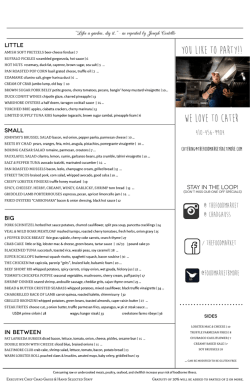
Cybercrime In The DeepWeb
Cybercrime in the Deep Web
Black Hat EU, Amsterdam 2015
Introduction
The Deep Web is any Internet content that, for various reasons, cannot be or is not indexed by search
engines like Google. This definition thus includes dynamic web pages, blocked sites (like those where you
need to answer a CAPTCHA to access), unlinked sites, private sites (like those that require login
credentials), non-HTML/contextual/scripted content, and limited-access networks.
Limited-access networks cover sites with domain names that have been registered on Domain Name
System (DNS) roots that are not managed by the Internet Corporation for Assigned Names and Numbers
(ICANN), like .BIT domains, sites that are running on standard DNS but have non-standard top-level
domains, and finally, darknets. Darknets are sites hosted on infrastructure that requires specific software
like Tor before it can be accessed. Much of the public interest in the Deep Web lies in the activities that
happen inside darknets.
What are the Uses of the Deep Web?
A smart person buying recreational drugs online will not want to type keywords in a regular browser.
He/she will need to go online anonymously, using an infrastructure that will never lead interested parties
to his IP address or physical location. Drug sellers as well, will not want to set up shop in online locations
where law enforcement can easily determine, for instance, who registered that domain or where the site’s
IP address exists in the real world.
There are many other reasons apart from buying drugs why people would want to remain anonymous, or
to set up sites that could not be traced back to a physical location or entity. People who want to shield
their communications from government surveillance may require the cover of darknets. Whistleblowers
may want to share vast amounts of insider information to journalists but do not want the paper trail.
Dissidents in restrictive regimes may need anonymity in order to safely let the world know what is
happening in their country.
But on the other side of the coin, people who want to plot an assassination versus a high-profile target
will want a method that is guaranteed to be untraceable. Other illegal services such as the selling of
documents like passports and credit cards will also require an infrastructure that will guarantee
anonymity. The same could be said for people who leak other people’s personal information like
addresses and contact details.
The Clear Web vs The Deep Web
When discussing the Deep Web, it’s inevitable that the phrase “Clear Web” will pop up. It’s exactly the
opposite of the Deep Web—the portion of the Internet that can be indexed by conventional search
engines and accessible via standard web browsers without the need for special software and
configurations. This “searchable Internet” is called the Clear Web.
Balduzzi M., Ciancaglini V. (Trend Micro) - Page 1 of 31
The Dark Web vs The Deep Web
There is much confusion between the two, with some outlets and researchers freely interchanging them.
However, the Dark Web is not the Deep Web; it is only part of the Deep Web. The Dark Web relies on
darknets, networks where connections are made between trusted peers. Examples of Dark Web systems
include Tor and the Invisible Internet Project (I2P).
Deep Web Analyzer
The Deep Web Analyzer (DeWA) has been designed with the goal of supporting investigations in tracking
down malicious actors, exploring new threats and extracting meaningful data from the Deep Web, e.g.
new malware campaigns.
DeWA consists of the following 5 modules:
1. A Data Collection module, responsible for finding and storing new URLs from multiple sources
2. A Universal Gatewa, which allows to access the hidden resources in darknets like TOR and I2P,
and to resolve custom DNS addresses
3. A Page Scouting module, responsible for crawling the new URLs collected
4. A Data Enrichment module that takes care of integrating the scouted information with other
sources
5. A Storage and Indexing module, which make the data available for further analysis
6. Visualization and analytic tools
System Overview
Balduzzi M., Ciancaglini V. (Trend Micro) - Page 2 of 31
Data Collection
The first DeWA module consists on a data collection module, whereas data consists of fresh URLs related
to either:
Hidden services hosted in TOR and I2P
Freenet resource locators
.bit domains
other domains with a non-standard TLD, falling in the list of TLDs handled by some known
alternative domain registrars
Our monitoring infrastructure is based on:
User data, checking HTTP connections to hidden services or non-standard domains
Pastebin-like sites, checking for snippets of text containing Deep Web URLs
Public forums (reddit etc…), looking for posts containing Deep Web URLs
Sites collecting Deep Web domains, such as deepweblinks.com or darkspider.com;
TOR Gateways statistics, such as tor2web.org: these sites allow users to access hidden services
without installing TOR, and keep publicly available statistics about what domains are accessed the
most on a daily basis;
I2P resolution files: as a way to speed up hostname resolution in I2P, it is possible to download
some precompiled host lists from a number of hidden sites. We save that list to find new
interesting domains;
Twitter, looking for tweets containing Deep Web domains or URLs.
Data is indexed in a way that we discover new domains, and also perform traffic analysis on the individual
URL components – e.g., an analysis that allows us to find new malware campaigns.
Universal Deep Web Gateway
As we mentioned previously, Deep Web resources are hard to access. Darknets like TOR and I2P require
a dedicated software that acts as a proxy, while alternative DNS systems and rogue TLDs need the use of
dedicated DNS servers to resolve an address. In order to make all these operations convenient and fast,
we have deployed Charon, a transparent proxy server that routes an HTTP request to the appropriate
system based on the format of URLs.
Depending on the kind of URLs being accessed, Charon connect to:
64 load balanced TOR instances
an I2P instance
a Freenet node
a custom DNS Server able to do every custom TLD resolution
Page scouting
For every collected URL, we perform what we call “scouting”, i.e. we try to connect to the URL and save
the response data. In case of error, the full error message is stored, to understand if the connection failed
Balduzzi M., Ciancaglini V. (Trend Micro) - Page 3 of 31
due to domain resolution error, server-side error, transport error, etc. In case of HTTP errors, the full HTTP
headers are stored, a practice that has already proven to be successful to identify malware related hosts,
who are known to answer only to specific type of HTTP requests and will fail otherwise.
In case of success, we use a headless browser to extract relevant information from the downloaded page:
We log all the HTTP Headers, and follow any HTTP redirection chain;
We perform the full rendering of the page’s DOM (in order to get dynamic javascript pages out of
the way);
We take a page’s screenshot;
We compute the page’s size and md5;
We extract the page’s metadata: title, meta tags, resources, keywords;
We extract the text stripped of all the HTML;
We extract all the links from the page;
We collect the email addresses found in the page.
The extracted URLs are “back-fed” to the data collection module and indexed as an additional
data source.
Data Enrichment
Data enrichment of the scouted data consists, for every successfully scouted page, of the following
operations:
Language detection of the page;
Translation, using Google Translate, of every non-English page to English;
Link ratings and classification via Web Reputation System;
Significant WordCloud generation using semantic clustering.
The last operation relies on a custom clustering algorithm that generates a WordCloud of the site, i.e.
containing the most significant information. The algorithm works as follows:
1. The page text is tokenized in its individual words and the number of occurrences for each word;
2. Words are filtered, only substantives are kept while other elements such as verbs, adjectives etc.
are discarded. Substantives are normalized, so to keep only the singular form;
3. The semantic distance matrix is computed: this is a matrix containing how “close” each word is to
each other, using a so-called WordNet metric. The WordNet metric works by measuring the
taxonomical distance of every word in the general language. As an example, words like “baseball”
and “basketball” will score fairly close to one another since both are “sports”. The same way,
“dog” and “cat” will be considered close since they are both “animals”. On the other hand, “dog”
and “baseball” will be considered pretty far from each other;
4. Once we have the distance of every word pair, words are clustered together starting from the
closest one in increasing distance. We create this way groups of words with similar meaning;
5. Clusters are labeled using the first word in alphabetical order as label, and scored summing up
the occurrences of every word in the cluster;
6. Using the labels and scores of the top 20 clusters, a WordCoud is generated and drawn.
This allows an analyst for a quick glance around the main topics of a page.
Balduzzi M., Ciancaglini V. (Trend Micro) - Page 4 of 31
Storage and Indexing
Both URL feeds and scouting information are stored in an Elasticsearch cluster and indexed according to
different criteria. Scouting information is indexed as one document per page, and made searchable by
Elasticsearch capabilities. This way relevant keywords can be searched throughout millions of pages with
text queries. URL information is also processed to store relevant statistics for each URL component. This
allows us, for example, to determine when a hostname has been spotted in the system and how popular
a certain URL is in our data. Other uses are knowing when a specific pair of hostname + query parameter
first appeared and how frequently is a given URL path across all domains.
UI and visualization
In order to access and manipulate the data, we rely on three different front-end systems:
For the so-called qualitative analysis, we developed a Deep Web Portal. This tool is aimed at
investigators to search through the Deep Web for interesting indicators. We offer different
visualizations, namely: a Website breakdown, that allows to navigate all the Deep Web URLs by
hostname, path, query string and search by URL components; a URL Summary, showing the entire
list of collected URLs; a Scouting summary, presenting the scouted pages individually, and
allowing searches in the page content, rather than in the URL.
For the so called quantitative analysis, we rely on Kibana for advanced statistics and realtime
metric calculations on the data. It offer a first tab for data exploration, and a Visualization tab that
allows for the plotting of charts according to different data metrics and aggregations.
For more advanced data inspection, we rely on an iPython notebook, enriched with custom
libraries, that allows us to run python scripts against the Elasticsearch cluster, to inspect the data
natively and to compile detailed reports inline.
The State of the Deep Web
In this Section we provide some use cases related to the information collected and extracted with our
system.
A first analysis over the past 2 years of collected data concerns the language distribution of all existing
Deep Web webpages.
Language detection is performed using two different methods: A Python module called guess_language,
which adopts a trigram-based algorithm and works offline (a); Google Translate (b). The individual results
are compared in order to overcome each system's limitations: for example, Google Translate has no
concept of "unknown language" (for example when there is no data in a page), but rather defaults to
English in case of doubt, hence creating a huge bias in the data.
The following figure shows the language popularity according to the number of domains containing pages
in said language. In computing the statistics we have filtered out pages smaller than 1kb (since they would
not bear enough data to perform a reliable detection) and all pages classifieds as "unknown")
Balduzzi M., Ciancaglini V. (Trend Micro) - Page 5 of 31
In terms of raw number of domains (who, unless in case of a page hosting provider like a "Geocities in the
Deep Web" could be, almost always correspond to the actual number of different sites) we see that
English is the language of choice here, with more than 75% domains. Second for variety comes Russian,
followed by French (which might include, of course, both French and French Canadian sites).
In the next example, we have grouped 2-years of data according to the URLs’ scheme (e.g. http, https,
ftp…). Of all the collected domains, almost 22.000 are (predictably) associated to http(s) protocol, being
data hosting the principal activity. But if we filter out those domains, the remainder shows some
interesting data, as portrayed by figure:
Balduzzi M., Ciancaglini V. (Trend Micro) - Page 6 of 31
More than 100 domains are in fact hosting IRC(S): these are normally chat servers that can either be used
as a rendezvous point for malicious actors to trade goods, or as a communication channel for botnets.
Same concept applies to the 7 XMPP domains (i.e., Jabber-like IMs), representing another protocol for
chat servers running in TOR.
Examples of malicious activities in the Deep Web
The goods and services we found offered in the Deep Web very well translate the kinds of transactions
people try to get into if their anonymity was guaranteed. The lack of proper identification presents a high
risk, but it also provides an obscure sense of security that grants them the freedom to offer mostly illegal
goods and services. Also, unlike in the cybercriminal underground, most types of activities we saw in the
Deep Web have more drastic effects to the “real world”.
We can’t vouch for the authenticity of the goods and services discussed here, only for the fact that the
sites advertising them do exist. We weren’t able to cover all of the possible goods and services offered,
but included several of the major categories that should give a clear idea of the nature of transaction that
goes on in the deep web.
Passports / Citizenship for sale
Passports and ID are uniquely powerful documents – and fake ones even more so. They act not only as a
form of identification for crossing borders (including ones the buyer could normally not easily cross), but
also can be used for everything from opening of bank accounts, apply for loans, purchasing property and
much more – so it of no surprise that they are a valuable commodity. There are several sites on the Deep
Balduzzi M., Ciancaglini V. (Trend Micro) - Page 7 of 31
Web claiming to sell passports and other forms of official ID, with prices varying from country to country,
and seller to seller.
As mentioned in the Intro the validity of such services is hard to verify without actually purchasing from
them, and especially in the cases of things like Citizenship these services may well be simple scams preying
on the vulnerable people in different countries who are looking to obtain citizenship in order to remain in
that country.
USA Citizenship for sale for under 6000 USD
http://xfnwyig7olypdq5r.onion/
Balduzzi M., Ciancaglini V. (Trend Micro) - Page 8 of 31
Balduzzi M., Ciancaglini V. (Trend Micro) - Page 9 of 31
Pricing information and samples for fake passports and other documents
http://fakeidigyiumbgpu.onion
References:
Balduzzi M., Ciancaglini V. (Trend Micro) - Page 10 of 31
[1] http://xfnwyig7olypdq5r.onion/ - USA Citizenship
[2] http://vfqnd6mieccqyiit.onion/ - UK Passports
[3] http://fakeidigyiumbgpu.onion/ - Fake Passports, many countries
Stolen Accounts for Sale
The buying and selling of stolen accounts if most definitely not restricted to the Deep Web alone – this is
a very common practice among all of the criminal underground forums that exist on the Clear Web, and
something that we have written extensively about in the past in reports on the Russian [1][2] and Chinese
[3] speaking undergrounds. Accounts for credit cards, banking, online auction sites and gaming are
probably among the most common of such sites being sold.
As is the case on the Clear Web, prices vary a lot among different sites – but more mature offerings (such
as stolen Paypal accounts below) will tend to reach a generally accept pricing norm. Accounts such as
these are sold in one of two ways – either as “high quality”, verified accounts – where the exact current
balance is known; or as bulk amounts of unverified accounts – but normally with a guarantee that at least
a certain percentage will be valid. The first of these two categories can normally be seen as a higher cost
item, but with greater likelihood of return of investment for a buyer – where as the bulk account sales will
be significantly cheaper.
Unverified accounts sold in bulk – 80% valid or replacement offered
http://3dbr5t4pygahedms.onion/
One offering that can be found quite readily on the Deep Web that is more unusual to find on the Clear
Web is actual physical credit cards being sold. That is not to say these do not exist on the Clear Web
Balduzzi M., Ciancaglini V. (Trend Micro) - Page 11 of 31
criminal forums – they most certainly do – however the sites on the Deep Web seem a bit more
professional in their approach.
Replica credit cards created with stolen details
http://ccccrckysxxm6avu.onion/
References:
[1] http://www.trendmicro.com/cloud-content/us/pdfs/security-intelligence/white-papers/wp-russianunderground-101.pdf
[2] http://www.trendmicro.com/cloud-content/us/pdfs/security-intelligence/white-papers/wp-russianunderground-revisited.pdf
[3]http://www.trendmicro.com/cloud-content/us/pdfs/security-intelligence/white-papers/wp-thechinese-underground-in-2013.pdf
[4] http://paypal4ecnf7eyqa.onion - Stolen Paypal accounts
[5] http://3dbr5t4pygahedms.onion/ - Unverified stolen accounts
[6] http://ccccrckysxxm6avu.onion/ - Replica stolen credit cards
Assassination Services
Perhaps one of the most worrying services on the Deep Web – and definitely one that would be very
foolish to advertise on the Clear Web – is the service of Hitman for Hire, or Assassination. Several such
services exist on the Deep Web. Even the sites themselves acknowledge the highly secret nature of how
they have to conduct their business – one site clearly states that as all contracts are private they cannot
offer proof of past work, give feedback from previous clients or show any other proof of past success.
Balduzzi M., Ciancaglini V. (Trend Micro) - Page 12 of 31
Instead they ask the person to prove upfront that they have enough Bitcoin available for the job by placing
the bitcoin with a reputable (by criminal standards) escrow service. Only when the hitman has carried out
the assassination and provided proof, the funds be released.
Balduzzi M., Ciancaglini V. (Trend Micro) - Page 13 of 31
Balduzzi M., Ciancaglini V. (Trend Micro) - Page 14 of 31
C’thulu Resume – Assassination Services for Hire
http://cthulhuuap7ch47k.onion
As can be seen in the screenshot above, pricing varies based on the manner of death or injury, but also by
the status of the target. In fact Ross Ulbricht, the man recently convicted of running the infamous Silk
Road forum for illegal drugs, attempted or order 5 assassinations of partners and others that he had fallen
out with [1].
A different take on such services, and one that we hope if not actually meant as a real service is
“crowdsourced assassination”. One site, Deadpool, operates by users putting forward potential targets.
Others can then contribute funds via bitcoin to the “dead pool”. Assassins can then anonymously “predict”
when and how the person will die. If the person does actually die, all the predictions are revealed and if
there is an exact match – the assassin who put it forward will claim the money. To date 4 names have
been put forward, but not money has been entered into the pools – making us believe that this is a hoax
site.
Deadpool – Crowd Sourced Assassination
http://deadpool4x4a25ys.onion
References:
[1] http://www.wired.com/2015/02/read-transcript-silk-roads-boss-ordering-5-assassinations/
Balduzzi M., Ciancaglini V. (Trend Micro) - Page 15 of 31
[2] http://cthulhuuap7ch47k.onion/ - Contract Killers (C’thulu Resume)
[3] http://deadpool4x4a25ys.onion/ - Crowdsourced assassination
Bitcoin and Money Laundry
By itself Bitcoin is a currency designed with anonymity in mind, and as a result it is frequently used when
purchasing illegal goods and services (and of course legitimate goods as well [1]). But while on one hand
all Bitcoin transactions are anonymous, as long as you do not link your wallet code to your real identity,
on the other they are fully public. Due to the setup of the Bitcoin blockchain every transaction is fully
public – and can be examined by investigators. So tracking money as it moves through the system is
doable, albeit quite difficult.
As a result a number of services have come about to add further anonymity into the system – making the
electronic currency even more difficult to track. They generally achieve this by “mixing” your bitcoin [2][3]
– essentially transferring them through a spidery network of micro transactions before returning them to
you. In the process you end up with the same amount of money (normally minus a small handling fee),
but your transactions become substantially harder to track.
EasyCoin – Bitcoin laundery service
http://easycoinsayj7p5l.onion
Balduzzi M., Ciancaglini V. (Trend Micro) - Page 16 of 31
Bitcoin laundery services help to increase anonymity of money moving through the bitcoin system, but
ultimately most bitcoin users will wish to extract the money from the system to be turned into cash or
other types of traditional payment means. Several anonymous services exist in the Deep Web for this
purpose – to exchange Bitcoin for money via Paypal, ACH, Western Union or even cash sent directly in the
mail.
WeBuyBitcoins – Exchanging Bitcoin for cash or electronic payments
http://jzn5w5pac26sqef4.onion
In the case of a site like WeBuyBitcoins, they offer to exchange real cash for Bitcoins at a competitive
exchange rate compared to equivalent non-anonymous services that exist in the Clear Web. However for
criminals willing to take on more risk for potentially more reward, another option is available – buying
counterfeit currency using Bitcoin.
Balduzzi M., Ciancaglini V. (Trend Micro) - Page 17 of 31
Buying counterfeit 20 USD for approximately half the price of face value
http://usjudr3c6ez6tesi.onion
References:
[1] Bitcoin used to by a Tesla Model S - http://www.wired.com/2013/12/tesla-bitcoin/
[2] http://easycoinsayj7p5l.onion – EasyCoin – Bitcoin Wallet with free Bitcoin Mixer / Laundery
[3] http://ow24et3tetp6tvmk.onion – OnionWallet – Bitcoin Wallet with free Bitcoin Mixer / Laundery
[4] http://jzn5w5pac26sqef4.onion – WeBuyBitcoins – Sell Bitcoins for Cash (USD), ACH, WU/MG, LR,
PayPal and others
[5] http://usjudr3c6ez6tesi.onion - Counterfeit $20 USD / Euro Bills
[6] http://y3fpieiezy2sin4a.onion/ - Counterfeit $50 Euro Bills
[7] http://qkj4drtgvpm7eecl.onion/ - Counterfeit $50 USD Bills
Leaked details Government, Law Enforcement and Celebrities
Among hacker culture (and also in online gaming culture to a degree) it is common for groups of
likeminded individuals to come together in loosely formed, or close knit groups. Due to the nature of the
activities carried out by such groups and individuals it is very common for rivalries and fallings out to occur
between different competing groups. When this occurs it is common practice for one group to attempt to
“dox” the other. Doxing is the practice or researching and broadcasting personal identifiable information
about an individual, which in the case of hackers is used to “unmask” a rival – essentially linking their real
Balduzzi M., Ciancaglini V. (Trend Micro) - Page 18 of 31
world identity to their online one. The means to do this vary but will normally combine accessing public
data, social engineering and direct hacking.
Cloudnine Doxing site – note it requests SSN, medical & financial info and more
http://cloudninetve7kme.onion
But the phenomenon of doxing or exposing private details is by no means restricted to hackers vs hackers
– it is also quite common for hackers to target companies, celebrities and other public figures. In the case
of companies having details exposed that is not simply restricted to hacking activity of course, it can also
be insiders – as is commonly the case with well-known site Wikileaks – which also has a Deep Web
presence, including a page to allow anonymous submission of new leaks.
It’s very hard to know if these details are actually correct or not – but in many cases the supplied leaked
details include DOB, SSN, personal email addresses, phone numbers, physical addresses and more. For
example one site, Cloud Nine, lists possible “dox” for public figures such as:
-
Several FBI agents
Political figures like Bill & Hillary Clinton, Barack & Michelle Obama, Sarah Palin, US Senators and
others
Celebrities such as Angelina Jolie, Bill Gates, Tom Cruise, Lady Gaga, Beyonce, Dennis Rodman and
more
Balduzzi M., Ciancaglini V. (Trend Micro) - Page 19 of 31
Apparent personal email account of Barack Obama (unverified)
http://cloudninetve7kme.onion
Apparent leaks of LEA (unverified)
http://cloudninetve7kme.onion
A leak for Kim Kardashian among other hacker related dox
http://cloudninetve7kme.onion
References:
[1] http://cloudninetve7kme.onion - Doxing archive
Balduzzi M., Ciancaglini V. (Trend Micro) - Page 20 of 31
[2] http://gjlng65kwikileax.onion/ - Wikileaks clone
[3] http://wlupld3ptjvsgwqw.onion/wlupload.en.html - Wikileaks submission portal
[4] http://uhwikih256ynt57t.onion:80/wiki/index.php?title=Dox__Katherine_Bolan_Forrest_(Silk_Road_Judge)&oldid=5764 - Possible Judge Forrest leak
Drugs
As we mentioned, it is common for just about every report on the Deep Web to talk about how freely
available illegal drugs, and weapons, are. In this report we do not intend to go into major detail on this –
as it has been covered by others. But we did want to briefly highlight that fact that even after the
conviction of individuals like Ross Ulbricht – who was recently sentenced [1] to life with no chance of
parole for running the infamous drugs forum “The Silk Road” – procuring drugs on the Deep Web is still
relatively trivial.
The availability of illegal narcotics varies a lot on the Deep Web, with sites selling everything from the
relatively tame (such as contraband Tobacco[2]), to Cannabis[3], Psychedelics[4], Cocaine and so on.
The Peoples Drug Store – selling Heroin, Cocaine, Ectasy and more
http://newpdsuslmzqazvr.onion
Balduzzi M., Ciancaglini V. (Trend Micro) - Page 21 of 31
Grams – the Deepwebs search engine for drug
http://grams7enufi7jmdl.onion
In addition to dedicated shops or forums, a very popular site is “Grams” which allows for the easy search
and indexing of Deep Web sites that traffic in illegal drugs. With a logo styled on that of Google it has
become one of the Deep Web de facto sites for those looking to buy such goods.
We’ve even found TOR sites that offer live information of an active Cannabis grow house – showing live
stats for temperature, moisture and a live camera showing the plants growing over time.
Balduzzi M., Ciancaglini V. (Trend Micro) - Page 22 of 31
Growhouse – showing temperature and live streaming of Cannabis plant
http://growboxoo2uacpkh.onion
Drugs dealer in the Deep Web
Balduzzi M., Ciancaglini V. (Trend Micro) - Page 23 of 31
The reason we wanted to touch on drugs on the Deep Web in this section of the report is to further
highlight a point that was made in [8] – when you take down a criminal marketplace like the Silk Road, it
fundamentally is not a solution in itself. On one side you still have buyers looking to procure drugs, and
other side you have sellers wishing to sell to them. The marketplace or forum acts as meeting point in the
middle, but if you remove it – as long as the demand for the good is strong enough on both sides – another
marketplace will unfortunately always rise to take its place.
References:
[1] http://www.forbes.com/sites/katevinton/2015/05/29/ulbricht-sentencing-silk-road/
[2] http://cigs7cviqbi4bvuy.onion/ - Contraband Tobacco
[3] http://smoker32pk4qt3mx.onion - Cannabis
[4] http://ll6lardicrvrljvq.onion - Psychedelics
[5] http://newpdsuslmzqazvr.onion - Heroin, Cocaine and others
[6] http://grams7enufi7jmdl.onion - Grams – Deep Web drug search engine
[7] http://growboxoo2uacpkh.onion/ - Live feed from a Cannabis Growhouse
[8] http://www.trendmicro.com/vinfo/us/security/news/cybercrime-and-digital-threats/the-deep-webanonymizing-technology-good-and-bad - Expert Insight video Series – The Deep Web
Malware
In many ways, the Deep Web and malware are perfectly suited for each other, especially when it comes
to hosting command-and-control (C&C) infrastructure. It is the nature of hidden services and sites like
TOR and I2P to hide the location of servers using strong cryptography. This makes very difficult for forensic
researchers to investigate using traditional means like examining a server’s IP address, checking
registration details, and so on. In addition, using these sites and services isn’t particularly difficult. It is
then not surprising to see a number of cybercriminals use TOR for C&C. We’ve seen the operators behind
prevalent malware families use TOR for some parts of their setup. They simply bundle the legitimate TOR
client with their installation package. Trend Micro first wrote about this trend back in 2013 when MEVADE
malware caused a noticeable spike in TOR traffic when they switched to TOR-hidden services for C&C.
Other malware families like ZBOT followed suit in 2014.
As a first example, VAWTRAK malware is a banking Trojans that spreads via phishing emails. Each sample
communicates with a list of C&C servers whose IP addresses are retrieved by downloading an encrypted
icon file (i.e., favicon.ico) from hard-coded TOR-hosted sites. This provides the advantage of anonymizing
Balduzzi M., Ciancaglini V. (Trend Micro) - Page 24 of 31
the location of a criminal server but not the users who access it, which is not an issue because all of the
“users” are systems that the malware infected.
Vawtrak C&C showing the legitimate looking Favicon
http://4bpthx5z4e7n6gnb.onion/favicon.ico
Based on the presence of this favicon.ico file and the web-server setup of the C&C (many of which run
openresty/1.7.2.1), we are able to search in our system for complete lists of such sites and download the
latest C&C each day.
Example of fetched HTTP headers from C&Cs
Balduzzi M., Ciancaglini V. (Trend Micro) - Page 25 of 31
Identified TOR-based C&Cs (1)
Identified TOR-based C&Cs (2)
Balduzzi M., Ciancaglini V. (Trend Micro) - Page 26 of 31
Another major malware family that uses the Deep Web is CryptoLocker. CryptoLocker refers to a
ransomware variant that encrypts victims’ personal documents before redirecting them to a site where
they can pay to regain access to their files. CryptoLocker is also smart enough to automatically adjust the
payment page to account for a victim’s local language and payment means. TorrentLocker—a
CryptoLocker variant—makes use of TOR to host payment sites in addition to employing Bitcoin as form
of payment. It shows why the Deep Web appeals to cybercriminals who are willing to make their
infrastructures more robust to possible takedowns. The following screenshots are payment pages that
the Deep Web Analyzer captured. Both are rendered in different languages, giving us an idea of their
intended victims and origin.
Balduzzi M., Ciancaglini V. (Trend Micro) - Page 27 of 31
Cryptolocker C&C automatically formatted for a victim in Taiwan and Italy
http://ndvgtf27xkhdvezr.onion
Balduzzi M., Ciancaglini V. (Trend Micro) - Page 28 of 31
Breakdown by Victims and Countries
The following example is related to malware that steal confidential information. In our search
methodology, we look for prevalent query-string’s parameters in a short and recent time window –
allowing us to identify new threats as soon as they appear in the Deep Web.
In this example, two parameters—xu and xd—experienced a surge in popularity over the past week. Xu
was associated with more than 1,700 distinct values consisting of binary blobs. Further investigation
revealed that xu was used by NionSpy to leak stolen credentials (online banking, etc.) that are then
captured by a keylogger and posted to a dropzone in the Deep Web. Xd, meanwhile, was used to register
a new infection to the botnet. This registration included information like the victim’s machine name and
OS version, communicated in form of a JSON string like the following:
[REDACTED]2xx.onion:80/si.php?xd={“f155”:”MACHINE IP”,”f4336”:”MACHINE
NAME”,”f7035”:”5.9.1.1”,”f1121”:”windows”,”f6463”:””,”f2015”:”1”}
By counting the queries associated with the registration, we were able to build a profile of the number of
new victims per day, along with the amount of data leaked.
Automated Analysis on Prevalent Query-String Parameters
Balduzzi M., Ciancaglini V. (Trend Micro) - Page 29 of 31
Number of new Infections (and Leaked data, in bytes) per day.
Finally, worth to mention is a banking Trojan called Dyre that uses I2P as backup options for its C&C
infrastructure – normally ran using DGA on the Clear Web. This malware acts as a BHO that MiTMs onlinebanking pages at browser-level. This allows the code to back-connect from the victim to the attacker
(similar to a reverse-shell approach) with the goal of granting the attacker the access to the banking portal
of its victims. Accordingly to DeWA, this malware campaign introduced, over the last 6 month, 2 new
operating servers and currently the number of infected victims using I2P is increased.
Balduzzi M., Ciancaglini V. (Trend Micro) - Page 30 of 31
Traffic to Dyre’s I2P infrastructure.
References:
[1] http://blog.trendmicro.com/trendlabs-security-intelligence/the-mysterious-mevade-malware/
[2] http://blog.trendmicro.com/trendlabs-security-intelligence/defending-against-tor-using-malwarepart-1/
[3] http://blog.trendmicro.com/trendlabs-security-intelligence/defending-against-tor-using-malwarepart-2/
[4] http://blog.trendmicro.com/trendlabs-security-intelligence/steganography-and-malware-why-andhow/
[5] http://4bpthx5z4e7n6gnb.onion/favicon.ico - Vawtrak / Neverquest C&C
[6] http://ndvgtf27xkhdvezr.onion - Cryptolocker C&C
Balduzzi M., Ciancaglini V. (Trend Micro) - Page 31 of 31
© Copyright 2025







